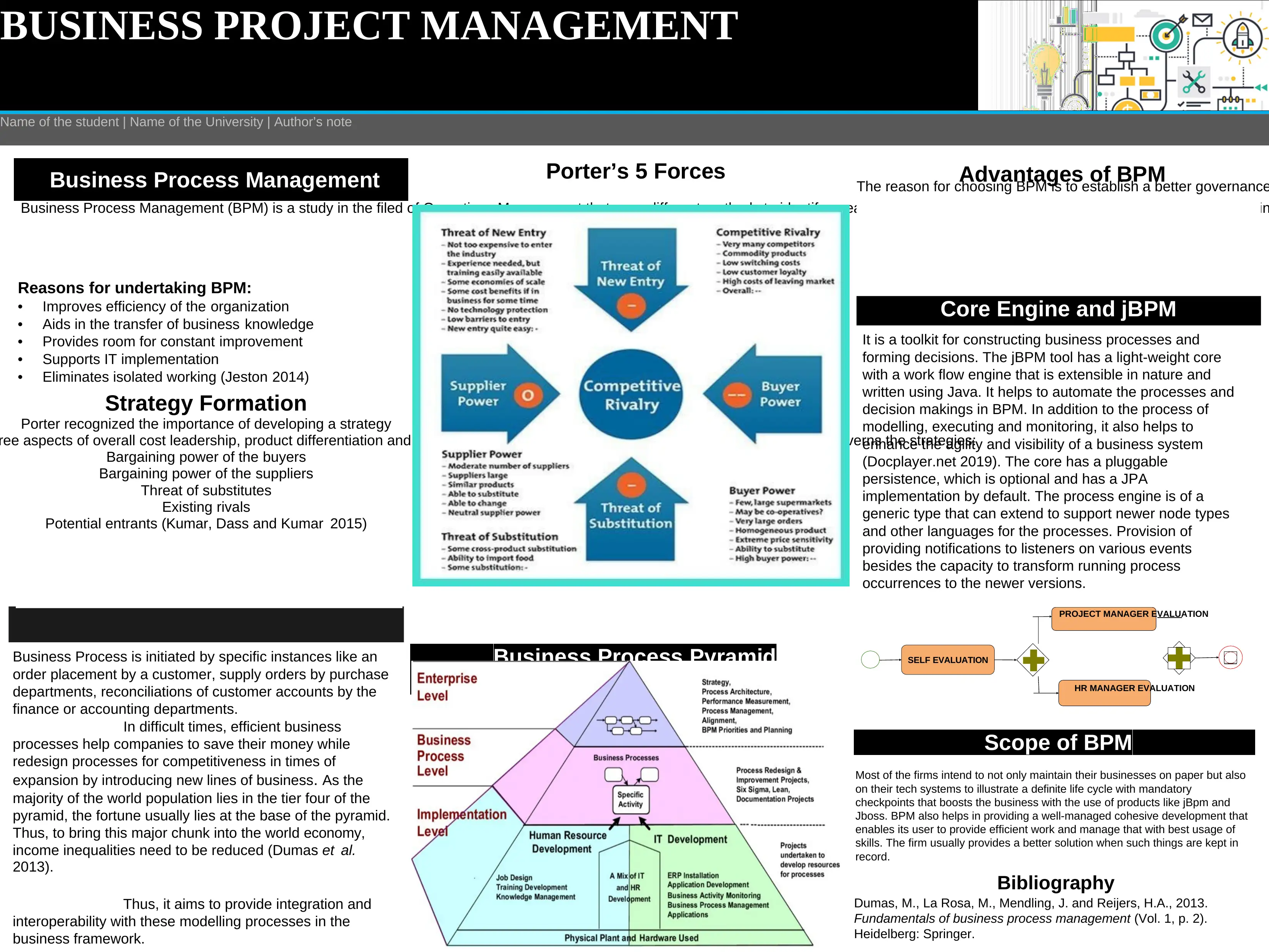COIT 20252: Business Process Management Report and Analysis
VerifiedAdded on 2022/10/10
|2
|769
|16
Report
AI Summary
This report provides an in-depth analysis of Business Process Management (BPM), covering various aspects such as process architecture, the SCOR framework, process metrics, and the Zachman framework. It explores the advantages of BPM, including its role in improving organizational efficiency, facilitating knowledge transfer, and supporting IT implementation. The report examines Porter's 5 Forces model and its influence on strategy formation, emphasizing the importance of cost leadership, product differentiation, and focus. It also delves into the initiation of BPM, the use of tools like jBPM, and the concept of the Business Process Pyramid. Furthermore, it discusses business process management's scope, highlighting its role in maintaining businesses on both paper and tech systems, ensuring a well-managed cohesive development, and providing efficient work management. The report also includes a bibliography with relevant sources.
1 out of 2








![[object Object]](/_next/static/media/star-bottom.7253800d.svg)